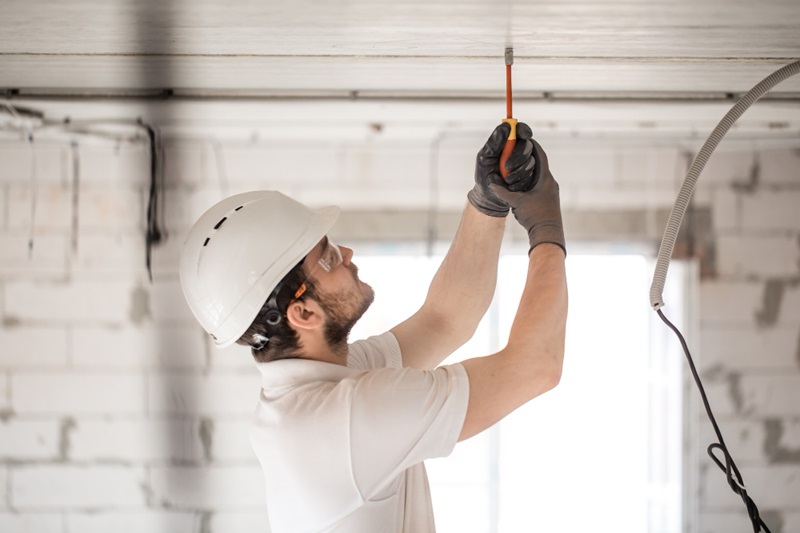Have you ever felt a strange discussion that comes from your power outlets, or have seen a sudden spike in the use of electricity in your house? These experiences can be insecure and question your home. After all, electricity is a powerful resource, and even small irregularities can cause important problems if ignored. When you finish reading, you will know when an emergency electrician is called and how to keep your house safe while waiting for professional help. Whether you work with sparks, burning odor or persistent electric shock, this guide will help you present problems quickly and protect your home from potential life -threatening dangers.
Why it is important to identify electricity warning quickly
Remember that there is nothing wrong with calling an emergency electrician; This is about preserving peace of your mind. If you immediately get small problems, you can place the cost of repair down and avoid the expensive equipment expenses. In short, do not underestimate the importance of an initial response can only save you time, money and even protect the family’s good.
Understand the role of an emergency electrician
In the core, an emergency electrician provides immediate support when the electrical system in your home is unsafe or unstable. Unlike a regular electrician, who can handle scheduled installations or regular repairs, an Emergency Response Electric Professional is trained to handle dangerous conditions that require rapid action. This includes everything from deficient switches to live wires that cause the risk of real time.
One of his leading roles is to identify the cause of the problem as soon as possible. If the circuit breaker continues to stumble or awaken your outlets, an emergency electrician may indicate whether it is a hidden deficiency that can lead to lightning. They not only bring their experienced knowledge, but also special tools that help highlight the problems hidden behind the walls or ceilings.
What does an electric emergency mean?
When the spark flies or a strange odor is tampered through the house, it is the worst and easy to worry about a great destruction. But what is a real electric emergency formation? Understanding the difference between immediate and regular problems can help you work with care.
Electrical emergencies vs. non-fall ratio
Each error should not be sent to you in panic, but it is important to know the difference. A non-nodal relationship can be a gradually flickering light caused by a loose bulb. Conversely, an electric emergency is something that causes immediate risk – such as overloaded force points, frequent burning odor or clear sparks from a unit. When these conditions arise, it is time to call a professional electrical emergency preparedness.
Regular electric emergency in Australian homes
Many Australian houses, whether in Brisbane, Melbourne or Sydney, experience similar problems. Constant tripping circuit breakers, sudden power growth and frequent buzzing sounds are everyday’s electric emergency that cannot be separated. In rural areas, thunderstorms often have ups and downs in dangerous voltage or partial power outages. Keeping an eye on these problems can help you decide that an electrician must call immediately to prevent further complications.
When an electrician vs. To call regular electrical maintenance
Regular maintenance – for example, observing your wires once a year – is a smart step for the owner of any house. However, immediate problems require immediate attention from 24/7 electricians. If you notice any signal of electrical recession – for example, smoke, excessive heat around fixtures or inexplicably electrical loss – you should call an emergency electrician directly. It is always better to be safe against sorry while working with powerful power strength
Warning sign # 1: Constant electric wave or shock
Everyone has experienced a smaller tingling while touching a unit or switching to light. But a strong shock or frequent increase in your power supply is a completely different story. These events are signs of the story mentioned that you can be in the midst of an electric emergency and require immediate help.
Warning sign # 2: flicker or dimy light
The light of flicker may look like a little discomfort – maybe you are blamed for the “dodi” bulb or a fictional ghost. However, when your light continuously decreases and shines for no reason, it is an important warning that indicates major problems.
Warning sign # 3: Overheating of outlet or burning odor
Your feeling of smell can be a powerful tool for detecting electric emergency conditions. If you are reminiscent of burning plastic or see a disappointing outlet, it is considered anxiety with high priority.
WARNING sign 4: Constant Tripping Circuit Breakers
Complaints that are tripped are normal at once; This is how they protect your home from additional fee. But if you reset them more often than drinking a cup of coffee, it’s time to ask yourself if something gets more serious.
Warning sign # 5: Grid or echo sounds
There are some things in the form of nerve assessment as a clear spark or high echo from your electrical adjustment. These distasteful sounds often indicate an underlying error that requires immediate attention.
Conclusion:
Finally, being careful about warning signs and behaving early is the best way to protect your home from dangerous electric emergencies. From frequent power growth to distasteful burning Odor, these clues are the home’s methods that require professional intervention to tell you. If you look at any of these issues, just don’t close them – select the phone and contact an experienced emergency electrician.
Remember that quick action is not just protecting your property; It also protects your loved ones. Overheating outlets, flashing lights and frequent tripping switches are not little irritation. They indicate deep problems in your wires. By responding quickly, you will prevent small defects from converting to a large -scale headache.
